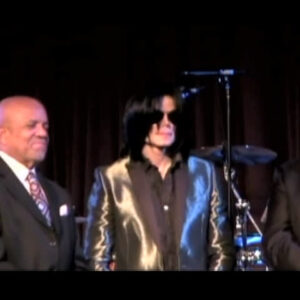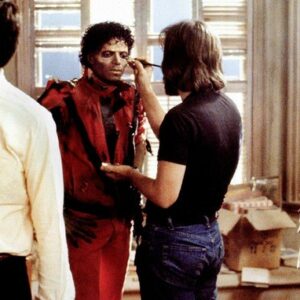The world of film and entertainment is perpetually shaped by the latest technological innovations. From the early days of silent films to today’s fully immersive CGI-laden blockbusters, the drive to push creative boundaries has always been intrinsic to the industry. One of the most groundbreaking—and controversial—technologies to emerge in recent years is deepfake. Deepfake technology allows for the manipulation of digital images and videos, making it possible to convincingly recreate a person’s likeness, including their facial expressions, voice, and mannerisms, through sophisticated machine learning algorithms. It’s an intersection of cutting-edge artificial intelligence and visual effects, capable of creating hyper-realistic digital replicas of real-life individuals.
The implications for media and entertainment are vast and multifaceted. On one hand, this technology opens the door to remarkable new forms of storytelling, allowing filmmakers to revisit historical periods, recreate legendary actors, or present impossible scenarios. On the other hand, deepfakes also raise profound ethical and legal concerns, particularly around issues of privacy, consent, and intellectual property.
A prime example of this emerging trend in Hollywood is Deepfake Studio’s ambitious project involving none other than iconic action star Bruce Willis. Despite the actor stepping away from the screen due to health concerns, the studio has found a way to keep his presence alive—through a highly realistic “digital twin” of the actor.
The Rise of Deepfake Technology
Deepfake technology leverages deep learning algorithms, a subset of artificial intelligence, to create realistic replicas of real-life individuals. Using an extensive dataset of images and videos, the system is trained to understand and replicate the subject’s facial features, expressions, and movements. This data is then mapped onto a digital model, enabling filmmakers to recreate specific scenes or performances with astounding accuracy. Originally emerging in niche internet communities, deepfake technology quickly gained traction as it was adopted for entertainment purposes. It has since been used in various ways, from rejuvenating actors in films to inserting fictional characters into real-world footage.
However, the implications extend beyond entertainment. In news and politics, deepfakes have become a major point of contention due to their potential for creating misinformation. The same technology that can bring an actor back to life can also be used to manipulate the public, posing serious risks to society’s relationship with media.
But in the case of Hollywood, deepfake technology has opened new opportunities, particularly for studios and production companies. It presents a way to work around the limitations of traditional filmmaking, such as actor availability or age restrictions. It’s also an opportunity to prolong the careers of beloved actors, offering a form of digital immortality.
Bruce Willis and the Creation of a Digital Twin
In a bold move, Deepfake Studio embarked on a project to digitally recreate Bruce Willis, aiming to keep the actor’s on-screen presence alive even as he steps back from physical performance. Willis, one of Hollywood’s most enduring action stars, known for films like Die Hard and Pulp Fiction, revealed in 2022 that he was suffering from aphasia, a condition that impacts his ability to communicate, forcing him into early retirement. This news saddened his fans worldwide, but it also raised questions about his legacy in an industry that has long relied on his iconic presence.
Enter Deepfake Studio. Utilizing over 34,000 images of Bruce Willis from various points in his career, the studio meticulously recreated a digital version of the actor. This process involved feeding images, film clips, and other media featuring Willis into an advanced AI system that learned to replicate his distinct facial structure, voice, and even the subtle micro-expressions that make his performances so recognizable. The end result? A digital twin so realistic that audiences might not even realize they’re watching a virtual version of the actor.
While this project was a technical triumph, it raises several important questions. Can an actor’s career continue after they’ve stopped acting physically? What are the ethical implications of using someone’s likeness without their active involvement? These questions are especially pressing in the case of Bruce Willis, where health issues have prevented him from directly participating in this endeavor.
The Purpose and Vision of the Project
The driving force behind this project is the desire to keep Bruce Willis’s on-screen legacy alive. His digital twin can now appear in films, commercials, or other media, effectively enabling him to continue working without being physically present. For Hollywood studios, this offers a unique opportunity: the ability to use beloved actors indefinitely, regardless of their availability or health. No longer confined by the limitations of the human body, stars can become virtual avatars, stepping into new roles in perpetuity.
One potential application is the creation of sequels or remakes in which Bruce Willis’s likeness could play a pivotal role. With the actor’s permission (or the permission of his estate), his digital counterpart could reprise iconic roles in new settings, potentially even exploring genres he never had the chance to tackle in his physical career.
This also means that action films, which require physically demanding performances, could see actors like Willis continuing to headline blockbusters for decades to come—without ever setting foot on set.
Rights and Ownership Issues: Who Owns the Digital Twin?
While Deepfake Studio may have created Bruce Willis’s digital twin, the studio does not own the rights to his image. This distinction is crucial, as it touches on one of the most contentious issues in the age of deepfake technology: ownership and control over one’s digital likeness.
In the traditional film industry, actors sign contracts that grant studios certain rights to use their image for promotional purposes or in sequels. But what happens when that image is no longer tied to the actor’s physical presence? Can a studio use an actor’s digital twin without their explicit consent for every project? And what about after the actor’s death? Could a studio continue to use their likeness, potentially for projects the actor never agreed to during their lifetime?
In the case of Bruce Willis, it’s unclear exactly how much control he retains over his digital self. While his family may have granted permission for Deepfake Studio to create the digital twin, they may not have full control over how it is used in the future. The legal framework around this issue is still murky, with intellectual property laws struggling to keep pace with technological advancements.
There are also broader ethical concerns to consider. An actor’s image is not just a commodity—it’s an integral part of their identity. If studios can create and use digital replicas of actors without their ongoing input, it raises questions about the very nature of performance and consent in the modern entertainment industry.
Implications for the Entertainment Industry
The creation of Bruce Willis’s digital twin signals a major shift in the entertainment landscape. On the one hand, deepfake technology offers exciting possibilities for filmmakers, allowing them to bring back actors who are unavailable, retired, or even deceased. It could also reduce the risks associated with physically demanding stunts, as digital actors can stand in for their human counterparts in dangerous or high-intensity scenes.
But these benefits come with significant risks. One of the most pressing concerns is the potential for misuse. Deepfake technology can be used to create convincing forgeries, undermining trust in media. In the hands of malicious actors, it could be used to create fabricated news footage, manipulate elections, or spread disinformation on a massive scale.
In the world of entertainment, the issue of intellectual property rights looms large. If studios can replicate actors without their consent, it undermines the actor’s control over their own image and career. Additionally, there is the question of how this technology could affect the livelihoods of working actors. If studios can create digital versions of A-list celebrities, will they still hire lesser-known actors for supporting roles? Or will digital avatars dominate the industry, leaving human actors with fewer opportunities?
The Future of Deepfakes in Hollywood
The advent of deepfake technology represents both a thrilling opportunity and a sobering challenge for Hollywood. As studios like Deepfake Studio continue to push the boundaries of what’s possible, they will need to navigate complex legal and ethical waters. The future of digital actors—like Bruce Willis’s digital twin—hinges on the development of clear guidelines around the use of a person’s likeness. Consent, control, and compensation will be key issues to address.
There’s no denying the allure of this technology. It offers the chance to preserve and celebrate the legacies of iconic actors like Bruce Willis. But it also forces us to confront difficult questions about the nature of identity and performance in the digital age. As deepfake technology continues to evolve, so too must the legal frameworks that govern its use.
In the coming years, Hollywood will need to strike a delicate balance between innovation and responsibility. Only then can the industry fully embrace the future of digital entertainment without losing sight of the human talent that makes cinema truly magical.





